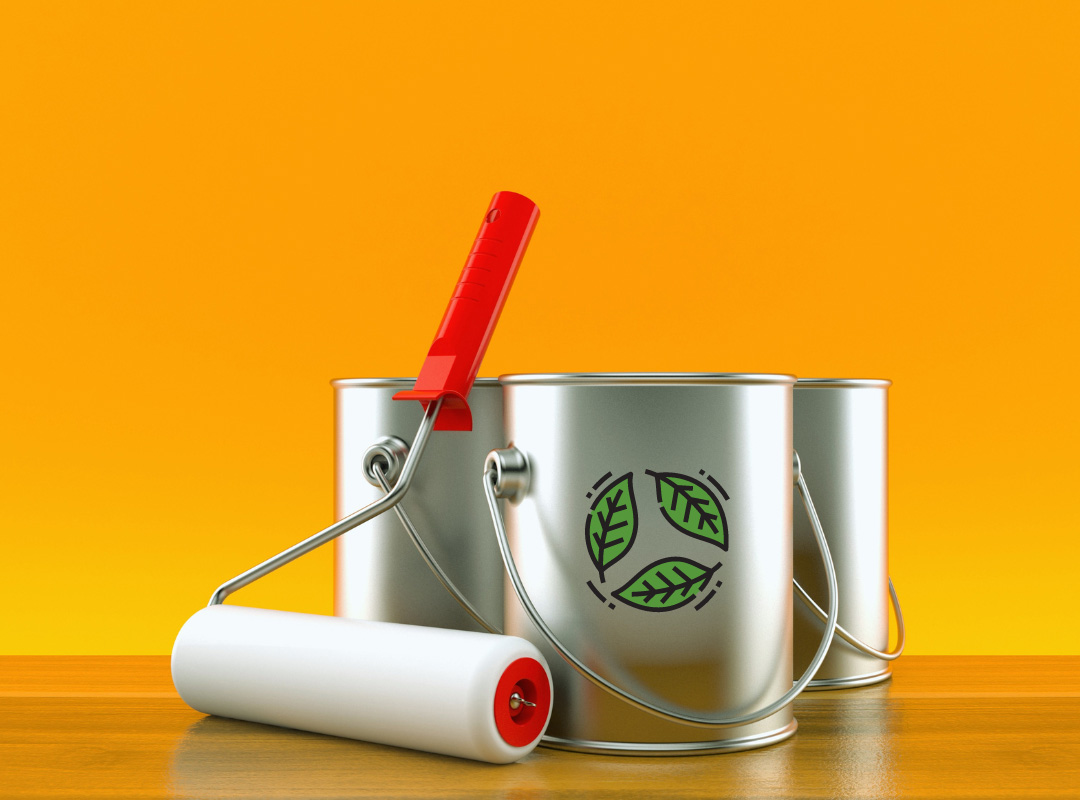The Benefits of Using Low VOC Paint

Virtually all paints contain some level of VOCs – Volatile Organic Compounds – and choosing a low VOC paint product is a much safer choice for many reasons. That is why when choosing what type of paint is best for your home, colour is only one consideration. The chemicals in the paint is something you should also consider, as this may impact the end result, not to mention what protective steps need to be taken during application, and while the paint is drying.
What are Volatile Organic Compounds (VOCs)?
VOCs are chemicals contained in paint. These chemicals release fumes into the air as the paint is drying, which can cause health issues such as headaches, dizziness, nausea, respiratory problems (particularly if you suffer from asthma) and even damage to your kidneys and central nervous system.
Given these harmful issues, you may be asking why even use paints with VOCs? Well, they do serve a purpose, which is to preserve the paint in the can, make it easier for paint application and flow, and slow the initial drying so that you have longer to get the paint on the wall. In fact, you’ll find that many other materials used in painting and decorating also contain similar solvents and chemicals, including adhesives, brush cleaners and paint thinners. Common types of VOCs include:
- Acetone
- Benzene
- Formaldehyde
- Ethylene glycol
- Methylene chloride
Do all paints contain VOCs?
All solvent-based paints include VOCs, such as oil-based paints, and water-based paints can contain a small amount of VOCs also. This doesn’t necessarily mean that this is bad; the quantity of VOCs in your desired paint, and following the manufacturer’s instructions for use, are the important things to be aware of.
High levels of VOCs are bad, not just for your home but also the environment, but external bodies (such as the Green Building Council of Australia) govern the level of VOCs that can be used in paints by setting Green Star industry standards. You’ll find most paint tins will show the level of VOC content on the label.
What is low VOC paint, and is a better alternative?
Low VOC paint contains a much lower level of VOCs which, while better for your health due to lower fumes, will have an impact on the paint flow and how long you have to paint with an open tin. A low VOC paint will dry faster on the wall, so you need to paint faster to avoid an uneven, patchy coat. Using a synthetic roller sleeve (rather than lambswool or microfibre roller sleeves) is a good way to offset this issue, as it will provide a more uniform, thicker coat for a more consistent finish. Back rolling the paint while it’s still wet is also recommended.
What about zero VOC paint?
Most paints contain some trace amounts of VOCs, even water-based paints, as mentioned above. So, while a paint product may say it has zero VOCs, it may still contain a very small amount of chemicals, especially if tinted. However, zero and low VOC paint is still a much better alternative to standard solvent-based paints with a higher VOC content; as a guide, look for a paint that has less than 5 grams per litre of VOCs.
Choosing the right paint, and painter, for the job
Painting your home, whether inside or out, is a big job, and choosing the right paint and painting professional is important so that you get the safest outcome while also ensuring the best finish possible.
Here at Kraudelt Painting, we’re committed to using eco-friendly products and processes. We use a range of non-toxic, low VOC paints so that you can be assured that we have your health in mind. Our professional painting team knows how to safely and effectively handle our paint products, and dispose of the remnants, to minimise the impact of paint fumes inside your home.
Give us a call today for expert advice and service on safely painting your home; our team of expert painters are here to help.
